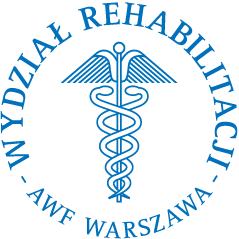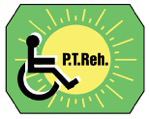


|
Current issue
Archive
Manuscripts accepted
About the journal
Editorial board
Reviewers
Abstracting and indexing
Contact
Instructions for authors
Publication charge
Ethical standards and procedures
Editorial System
Submit your Manuscript
|
1/2024
vol. 38 Original article
Sensorimotor versus core stabilization home exercise programs following total knee arthroplasty: a randomized controlled trial
Ebru Gülek Karadüz
1, 2
,
Riza Emrah Demirbaş
3
,
Ayça Yağcioğlu
4
,
Şule Badıllı Hantal
4
1.
Istanbul Medipol University, Department of Physiotherapy and Rehabilitation, Graduated School of Health
Science, Istanbul, Turkey
2.
Vocational School of Health Services, Osmangazi University, Eskişehir, Turkey
3.
Tuzla Gispir Hospital, Orthopeadics and Traumatology, Istanbul, Turkey
4.
Yeditepe University, Health Science Faculty, Physical Therapy and Rehabilitation Department, Istanbul,
Turkey
Advances in Rehabilitation, 2024, 38(1) 20–34
Online publish date: 2024/03/22
Article file
- Karaduz_2024_04_29.pdf
[0.76 MB]
ENW EndNote
BIB JabRef, Mendeley
RIS Papers, Reference Manager, RefWorks, Zotero
AMA
APA
Chicago
Harvard
MLA
Vancouver
1. Bozan Ö. Osteoarthritis and Rehabilitation. In: Algun C, 3rd ed. Physiotherapy and Rehabilitation. Nobel, İstanbul; 2018. 2.
Tuncer T, Kaçar C, Altan L, Atik O. Evidence-based recommendations for the management of knee osteoarthritis: A consensus report of the Turkish League against Rheumatism. Turk J Rheumatol. 2012; 27(1): 1–17. 3.
Snell DL, Hipango J, Sinnott KA, Dunn JA, Rothwell A, Hsieh CJ et al. Rehabilitation after total joint replacement: A scoping study. Disabil Rehabil. 2018; 40(14): 1718–31. 4.
Putera AD, Hasan M, Riyadli M, Fakhry MN. Determinants of patient satisfaction after total knee arthroplasty (TKA): A literature review. Bali Med J. 2023; 12(2): 1813–20. 5.
Brady OH, Masri BA, Garbuz DS, Duncan CP. Rheumatology: 10. Joint replacement of the hip and knee-when to refer and what to expect. CMAJ. 2000; 163(10): 1285–91. 6.
Kahlenberg CA, Nwachukwu BU, McLawhorn AS, Cross MB, Cornell CN, Padgett DE. Patient satisfaction after total knee replacement: A systematic review. HSS J. 2018; 14(2): 192–201. 7.
Lee HG, An J, Lee BH. The effect of progressive dynamic balance training on physical function, the ability to balance and quality of life among elderly women who underwent a total knee arthroplasty: A double-blind randomized control trial. Int J Environ Res Public Health. 2021; 18(5): 2513. 8.
Bade MJ, Kohrt WM, Stevens-Lapsley JE. Outcomes before and after total knee arthroplasty compared to healthy adults. J Orthop Sports Phys Therapy. 2010; 40(9): 559–67. 9.
Canovas F, Dagneaux L. Quality of life after total knee arthroplasty. Orthop Traumatol Surg Res. 2018; 104(1): 41–6. 10.
Hinman RS, Bennell KL, Metcalf BR, Crossley KM. Balance impairments in individuals with symptomatic knee osteoarthritis: a comparison with matched controls using clinical tests. Rheumatology (Oxford). 2002; 41(12): 1388–94. 11.
Fitzgerald GK, Piva SR, Gil AB, Wisniewski SR, Oddis CV, Irrgang JJ. Agility and perturbation training techniques in exercise therapy for reducing pain and improving function in people with knee osteoarthritis: A randomized clinical trial. Phys Ther. 2011; 91(4): 452–69. 12.
Piva SR, Gil AB, Almeida GJ, DiGioia III AM, Levison TJ, Fitzgerald GK. A balance exercise program appears to improve function for patients with total knee arthroplasty: A randomized clinical trial. Phys Ther. 2010; 90(6): 880–94. 13.
Liao CD, Liou TH, Huang YY, Huang YC. Effects of balance training on functional outcome after total knee replacement in patients with knee osteoarthritis: A randomized controlled trial. Clin Rehabil. 2013; 27(8): 697–709. 14.
Liu SC, Hou ZL, Tang QX, Qiao XF, Yang JH, Ji QH. Effect of knee joint function training on joint functional rehabilitation after knee replacement. Medicine (Baltimore). 2018; 97(28): e11270. 15.
Davut S, Huzmeli I, Hallaceli H, Kalacı A. Does total knee arthroplasty positively affect body static‒dynamic balance and fall risk parameters in patients with satisfactory functional scores? Cureus. 2022; 14(10): e30207. 16.
Taniguchi M, Sawano S, Maegawa S, Ikezoe T, Ichihashi N. Physical activity mediates the relationship between gait function and fall incidence after total knee arthroplasty. J Knee Surgery. 2021; 34(11): 1205–11. 17.
Alrawashdeh W, Eschweiler J, Migliorini F, El Mansy Y, Tingart M, Rath B. Effectiveness of total knee arthroplasty rehabilitation programmes: A systematic review and meta-analysis. J Rehabil Med. 2021; 53(6): jrm00200. 18.
Barker KL, Room J, Knight R, Dutton S, Toye F, Leal J et al. Home-based rehabilitation program compared with traditional physiotherapy for patients at risk of poor outcome after knee arthroplasty: the CORKA randomized controlled trial. BMJ Open. 2021; 11(8): e052598. 19.
Eymir M, Erduran M, Ünver B. Active heel-slide exercise therapy facilitates the functional and proprioceptive enhancement following total knee arthroplasty compared to continuous passive motion. Knee Surg Sports Traumatol Arthrosc. 2021; 29(10): 3352–60. 20.
Fozo ZA, Ghazal AH, Hesham GM, Matar SG, Kamal I, Ragab KM. A Systematic Review and Meta-Analysis of Conventional Versus Robotic-Assisted Total Knee Arthroplasty. Cureus. 2023; 15(10): e46845. 21.
Konnyu KJ, Thoma LM, Cao W, Aaron RK, Panagiotou OA, Bhuma MR et al. Rehabilitation for Total Knee Arthroplasty: A Systematic Review. Am J Phys Med Rehabil. 2023; 102(1): 19–33. 22.
Moutzouri M, Gleeson N, Coutts F, Tsepis E, Gliatis J. Early self-managed focal sensorimotor rehabilitative training enhances functional mobility and sensorimotor function in patients following total knee replacement: A controlled clinical trial. Clin Rehabil. 2018; 32(7): 888–98. 23.
Wilson JD, Dougherty CP, Ireland ML, Davis IM. Core stability and its relationship to lower extremity function and injury. J Am Acad Orthop Surg. 2005; 13(5): 316–25. 24.
Aggarwal A, Kumar S, Kalpana Z, Jitender M, Sharma VP. The relationship between core stability performance and the lower extremities static balance performance in recreationally active individuals. Niger J Med Rehabil. 2010; 15(23): 11–6. 25.
Stivala A, Hartley G. The effects of a pilates-based exercise rehabilitation program on functional outcome and fall risk reduction in an aging adult status-post traumatic hip fracture due to a fall. J Geriatr Phys Ther. 2014; 37(3): 136–45. 26.
Ko DS, Jung DI, Jeong MA. Analysis of core stability exercise effect on the physical and psychological function of elderly women vulnerable to falls during obstacle negotiation. J Phys Ther Sci. 2014; 26(11): 1697–1700. 27.
Hita CF, Martínez AA, Cruz DD, Pérez-López FR. Fall prevention in postmenopausal women: the role of pilates exercise training. Climacteric. 2016; 19(3): 229–33. 28.
Levine B, Kaplanek B, Jaffe WL. Pilates training for use in rehabilitation after total hip and knee arthroplasty: a preliminary report. Clin Orthop Relat Res. 2009; 467(6): 1468–75. 29.
Karaman A. Investigation of the effect of trunk stabilization training on functional performance and balance in patients with total knee arthroplasty [dissertation]. Ankara (Turkey): Hacettepe University; 2014. 30.
Viveiro LAP, Gomes GCV, Bacha JMR, Carvas JN, Kallas ME, Reis M et al. Reliability, validity, and ability to identity fall status of the Berg Balance Scale, Balance Evaluation Systems Test (BESTest), Mini-BESTest, and Brief-BESTest in Older Adults who live in nursing homes. J Geriatr Phys Ther. 2019; 42(4): E45–E54. 31.
Şahin F, Yılmaz F, Özmaden A, Kotevoğlu N, Sahin T, Kuran B. Reliability and validity of the Turkish version of the Berg Balance Scale. J Geriatr Phys Ther. 2008; 31: 32–7. 32.
Ozdemir N, Subaşı SS, Gelecek N, Sarı Ş. The effects of pilates exercise training on knee proprioception: A randomized controlled trial. J DEU Med. 2009; 23(2): 71–79. 33.
Akseki D, Akkaya G, Erduran M, Pinar H. Proprioception of the knee joint in patellofemoral pain syndrome. Acta Orthop Traumatol Turc. 2008; 42(5): 316–21. 34.
Kramer J, Handfield T, Kiefer G, Forwell L, Birmingham T. Comparisons of weight-bearing and non-weight-bearing tests of knee proprioception performed by patients with patello-femoral pain syndrome and asymptomatic individuals. Clin J Sport Med 1997; 7: 113–8. 35.
Barrett DS, Cobb AG, Bentley G. Joint proprioception in normal, osteoarthritic and replaced knees. J Bone Joint Surg. 1991; 73: 53–6 36.
Whitney SL, Wrisley DM, Marchetti GF, Gee MA, Redfern MS, Furman JM. Clinical measurement of sit-to-stand performance in people with balance disorders: validity of data for the Five-Times-Sit-to-Stand Test. Phys Therapy. 2005; 85(10): 1034–45. 37.
Alghadir A, Anwer S, Brismée JM. The reliability and minimal detectable change of Timed Up and Go Test in individuals with grade 1-3 knee osteoarthritis. BMC Musculoskelet Disord. 2015; 16: 1–7. 38.
Saraç DC. Investigation of the reliability and validity of performance tests evaluating falls and balance in patients with total knee replacement [thesis]. Izmir (Turkey): Dokuz Eylül University; 2017. 39.
Paker N, Bugdayci D, Sabirli F, Ozel S, Ersoy S. Knee injury and osteoarthritis outcome score: Reliability and validation of the Turkish version. Turkiye Klinikleri J Med Sci. 2007; 27: 350–56. 40.
Hoglund LT, Pontiggia L, Kelly JD. A 6-week hip muscle strengthening and lumbopelvic-hip core stabilization program to improve pain, function, and quality of life in persons with patellofemoral osteoarthritis: A feasibility pilot study. Pilot Feasibility Stud. 2018; 4: 70. 41.
Julie P. SPSS survival manual-a step by step guide to data analysis using SPSS. 4th ed. Allen and Unwin; Australia, 2011. 42.
Umehara T, Tanaka R. Effective exercise intervention period for improving body function or activity in patients with knee osteoarthritis undergoing total knee arthroplasty: A systematic review and meta-analysis. Braz J Phys Therapy. 2018; 22(4): 265–75. 43.
Artz N, Elvers KT, Lowe CM, Sackley C, Jepson P, Beswick AD. Effectiveness of physiotherapy exercise following total knee replacement: A systematic review and meta-analysis. BMC Musculoskelet Disord. 2015; 16: 1–21. 44.
Mutsuzaki H, Takeuchi R, Mataki Y, Wadano Y. Target range of motion for rehabilitation after total knee arthroplasty. J Rural Med. 2017; 12(1): 33–7. 45.
Schulz M, Krohne B, Röder W, Sander K. Randomized, prospective, monocentric study to compare the outcome of continuous passive motion and controlled active motion after total knee arthroplasty. Technol Health Care. 2018; 26(3): 499–506. 46.
Wang Y, Wu Z, Chen Z, Ye X, Chen G, Yang J et al. Proprioceptive training for knee osteoarthritis: A systematic review and meta-analysis of randomized controlled trials. Front Med (Lausanne). 2021; 8: 699921. 47.
Moutzouri M, Coutts F, Gliatis J, Billis E, Tsepis E, Gleeson N. Early initiation of home-based sensorimotor training improves muscle strength, activation and size in patients after knee replacement: A secondary analysis of a controlled clinical trial. BMC Musculoskelet Disord. 2019; 20(1): 231. 48.
Tsauo JY, Cheng PF, Yang RS. The effects of sensorimotor training on knee proprioception and function for patients with knee osteoarthritis: A preliminary report. Clin Rehabil. 2008; 22(5): 448–57. 49.
Gauchard GC, Vançon G, Meyer P, Mainard D, Perrin PP. On the role of knee joint in balance control and postural strategies: Effects of total knee replacement in elderly subjects with knee osteoarthritis. Gait Posture. 2010; 32(2): 155–60. 50.
Aydemir AH, Şendur ÖF, Bozbaş GT. The effect of proprioception exercises on the risk of fall in knee osteoarthritis. J Turc Osteoporosis. 2017; 23(3): 93. 51.
Jogi P, Overend TJ, Spaulding SJ, Zecevic A, Kramer JF. Effectiveness of balance exercises in the acute postoperative phase following total hip and knee arthroplasty: A randomized clinical trial. SAGE Open Med. 2015; 3: 2050312115570769. 52.
Karaman A, Yuksel I, Kinikli GI, Caglar O. Do Pilates-based exercises following total knee arthroplasty improve postural control and quality of life? Physiother Theory Pract. 2017; 33(4): 289–95. 53.
Okada T, Huxel KC, Nesser TW. Relationship between core stability, functional movement, and performance. J Strength Cond Res. 2011; 25(1): 252–61. 54.
Schache MB, McClelland JA, Webster KE. Incorporating hip abductor strengthening exercises into a rehabilitation program did not improve outcomes in people following total knee arthroplasty: A randomized trial. J Physiotherapy. 2019; 65(3): 136–43. 55.
Joshi SM, Sheth MS, Jayswal MM. Correlation of core muscles endurance and balance in subjects with osteoarthritis knee. Int J Med Sci Public Health. 2019; 8(5): 1–5. 56.
Helme M, Tee J, Emmonds S, Low C. Does lowerlimb asymmetry increase injury risk in sport? A systematic review. Phys Ther Sport. 2021; 49: 204–13. 57.
Zawadka M, Talacha W, Oleszczak K, Paprocka J, Czepinska A, Sobiech L et al. Unilateral and bilateral jumping performance in female basketball players with and without a history of lower limb injuries. Adv Rehab. 2023; 37(3): 23–33. 58.
Connelly JW, Galea VP, Rojanasopondist P, Nielsen CS, Bragdon CR, Kappel A et al. Which preoperative factors are associated with not attaining acceptable levels of pain and function after TKA? Findings from an International Multicenter Study. Clin Orthop Relat Res. 2020; 478(5): 1019–28. 59.
Connelly JW, Galea VP, Rojanasopondist P, Matuszak SJ, Ingelsrud LH, Nielsen CS et al. Patient acceptable symptom state at 1 and 3 years after total knee arthroplasty: Thresholds for the Knee Injury and Osteoarthritis Outcome Score (KOOS). J Bone Joint Surg Am. 2019; 101(11): 995–1003.
This is an Open Access journal, all articles are distributed under the terms of the Creative Commons Attribution-NonCommercial-ShareAlike 4.0 International (CC BY-NC-SA 4.0). License (http://creativecommons.org/licenses/by-nc-sa/4.0/), allowing third parties to copy and redistribute the material in any medium or format and to remix, transform, and build upon the material, provided the original work is properly cited and states its license.
|
    |